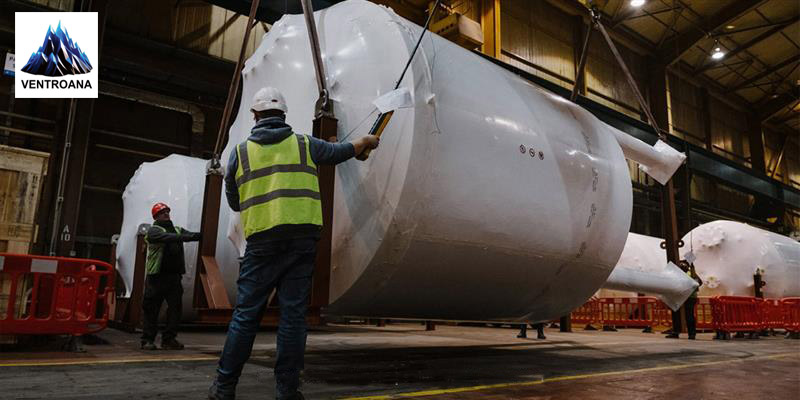Microgrid
March 06, 2024

In an era defined by rapid technological advancements and growing environmental concerns, the future of power generation stands at a pivotal juncture. As we strive for a sustainable energy landscape, businesses and industries are embracing innovative trends and technologies that promise to reshape the way we generate and consume power. Let's explore the key drivers driving this transformation and the commercial opportunities they present.
The shift towards renewable energy sources like solar, wind, and hydropower is gaining momentum worldwide. As concerns about climate change escalate, nations and businesses are increasingly investing in clean energy solutions. This presents a lucrative opportunity for companies specializing in renewable energy technologies, such as solar panel manufacturers, wind turbine developers, and hydroelectric plant operators.
By the year 2030, renewable energy sources are anticipated to contribute to around 45 to 50 percent of global generation, with projections indicating an increase to between 65 and 85 percent by 2050. (McKinsey)
The integration of energy storage technologies is critical for maximizing the potential of renewables and ensuring grid stability. Innovations in battery storage, including advancements in lithium-ion batteries and emerging technologies like flow batteries, present exciting opportunities for businesses.
The U.S. Energy Information Administration projects that in 2024, the battery storage capacity in the United States is poised to nearly double. (EIA)
Companies involved in energy storage research, manufacturing, and deployment are well-positioned to capitalize on the growing demand for reliable storage solutions. By the end of 2024, energy storage systems could increase by 89% if developers execute planned projects on schedule. Moreover, U.S. battery capacity is set to exceed 30 gigawatts by the same year according to current development plans.
The convergence of smart grid technologies and the Internet of Things (IoT) is revolutionizing power distribution and management. Smart grid systems enable real-time monitoring, automation, and optimization of energy networks, enhancing efficiency and reliability.
Forbes forecasts that by the year 2024, the global count of IoT devices will exceed 207 billion, encompassing a diverse array of tools and appliances. (Forbes)
These smart devices, increasingly integrated with AI, will extend beyond traditional computers and smartphones to include items like industrial machinery, making autonomous decisions. Businesses specializing in smart grid infrastructure, IoT devices, and energy management software stand to benefit from the increasing adoption of intelligent grid solutions.
The rise of decentralized energy resources, such as rooftop solar panels, microgrids, and distributed energy storage systems, is reshaping the energy landscape. The global blockchain in the energy market is projected to grow at a compound annual growth rate (CAGR) of 25.6%, surging from a value of US$6.43 billion in 2023 to US$31.73 billion by the conclusion of 2030. (Persistence Market Research)
Blockchain technology is making significant inroads into the energy sector, revolutionizing the way transactions and data are managed throughout the energy value chain. This transformative technology is being leveraged to enhance transparency, security, and efficiency in various aspects of the energy market. This trend presents opportunities for businesses to capitalize on the growing demand for localized power generation and energy resilience. Companies offering decentralized energy solutions, including solar installers, microgrid developers, and energy service providers, can tap into this emerging market.
The global microgrid market is poised for remarkable growth, with a projected trajectory of USD 36.05 billion in 2023 indicating an impressive rise. It is projected to exceed USD 168.64 billion by the end of 2032, with a registered compound annual growth rate (CAGR) of 18.7% anticipated from 2023 to 2032. (Precedence Research)
The Microgrid Market Size is expected to reach USD 168.64 Billion in 2032, with a CAGR of 18.7%
The electrification of transportation, heating, and industrial processes is driving up electricity demand and creating new opportunities for businesses. Electric vehicles (EVs), electric heating systems, and electrified industrial equipment are becoming increasingly common, opening avenues for companies involved in electric vehicle manufacturing, charging infrastructure deployment, and electric appliance production.
The integration of digital technologies and artificial intelligence (AI) is driving efficiency and optimization across the power generation sector. AI-driven predictive analytics, remote monitoring systems, and autonomous control algorithms enable more efficient power plant operation and maintenance. Companies offering AI-powered solutions for power generation optimization, predictive maintenance, and asset management are poised to benefit from this trend.
One of the primary challenges facing the future of power generation is the intermittent of renewable energy sources such as solar and wind. Unlike traditional fossil fuels, renewable sources are dependent on weather conditions and may not always be available when energy demand is high. This intermittent can challenge grid stability and reliability, especially as the share of renewable energy in the energy mix increases.
Renewable energy sources offer clean and sustainable alternatives, their intermittent nature necessitates effective energy storage solutions to store excess energy generated during peak production periods and release it when demand is high. However, existing energy storage technologies face limitations in terms of capacity, efficiency, and cost-effectiveness, hindering their widespread adoption and scalability.
Continued research and development efforts aimed at improving energy storage technologies are crucial for addressing the intermittent of renewable energy sources. Innovations such as advanced battery technologies, including lithium-ion batteries and emerging alternatives like flow batteries and solid-state batteries, hold promise for enhancing energy storage capacity, efficiency, and longevity. Investing in research and development initiatives focused on energy storage can accelerate the deployment of renewable energy and ensure grid stability.
The integration of smart grid technologies and the Internet of Things (IoT) offers potential solutions to the challenges posed by the intermittent of renewable energy sources. Smart grid systems enable real-time monitoring, automation, and optimization of energy networks, allowing utilities to balance supply and demand more effectively. IoT-enabled devices, such as smart meters and sensors, facilitate demand response programs and enable consumers to actively manage their energy usage. By leveraging smart grid and IoT technologies, utilities can enhance grid flexibility, improve energy efficiency, and mitigate the impact of renewable energy intermittent.
The future of power generation presents a wealth of commercial opportunities for businesses across various sectors. By embracing innovative technologies, staying ahead of market trends, and addressing the evolving needs of customers and regulators, companies can position themselves for success in the dynamic and transformative energy landscape of tomorrow. The time to invest in the future of power generation is now, and the potential for growth and innovation is boundless.
Look at the exceptional Power Generation Solutions offered by Ventro Analytics because we're dedicated to providing top-notch solutions and look forward to assisting you.
Tags: ["Power Generation Solutions" "generator power solutions" "electric power generation industry" "generac industrial power generator" "industrial power generator"]

Successful Implementation of Green Hydrogen in Power Plants
Discover how green hydrogen revolutionizes power plants with sustainable energy solutions, reducing ...

Driving Innovation and Resilience: Insights from the 10th Annual Energy Supply C...
Gain insights on driving innovation and resilience at the 10th Energy Supply Chain & Procurement Sum...

Understanding EPC Engineering: Key Concepts Explained
Discover the essentials of EPC Engineering, covering contracts, project phases, and roles of EPC con...